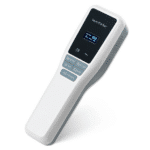As the number of Americans living with chronic illnesses continues to grow and payers move forward with site-of-care optimization policies, the demand for ambulatory infusion centers (AIC) has exploded. AICs offer many advantages to patients and providers while delivering vital treatment options for patients with a wide range of conditions, from cancer to Crohn’s disease.
Running an AIC, however, is not without its challenges. One of the biggest challenges we often hear about from AIC operators is staffing and scheduling. Because AICs must be prepared to treat a wide range of conditions, they must have clinicians who are both highly skilled and highly flexible. So the question arises, “What is the best staffing model for an AIC?”
What to Consider When Staffing an Ambulatory Infusion Center
While there is no standard related to staffing models for infusion centers, there are many different options that infusion operators can choose from when it comes to staffing an AIC. Some organizations utilize advanced practice registered nurses (APRN) and registered nurses (RN) under the supervision of a medical director (taking state-specific scope of practice and payer contract restrictions into consideration) to provide all care and administrative duties. Another option is to use support staff such as a medical assistant, medical secretary, or patient service representative in addition to the APRN or RN.
It is important to assess staffing needs at a local level (be sure to assess the needs at every location) to optimize your model based on your center’s specific needs to provide the best care for patients.
When planning a staffing model, it is critical you consider the volume of your AIC, the experience and comfort level of the infusion clinician(s), patient acuity, and treatment protocols. Centers with high daily patient volume will benefit from having administrative support for the clinicians providing direct patient care, allowing that clinician the required time and focus to provide quality patient care while reducing distractions that could lead to prolonged treatment time and even medication errors.
Leveraging Support Staff in an Ambulatory Infusion Center
Support staff, sometimes referred to as unlicensed assistive personnel (UAP), can be responsible for administrative tasks such as patient and provider outreach, referrals, and scheduling. If the UAP holds current basic life support (BLS) certification and has a medical background, such as a medical secretary or medical assistant (MA), they can help assist the infusion clinician by greeting and settling the patient and obtaining baseline vital signs. The use of this support person allows the infusion clinician (for example, an RN or APRN) to focus on patient care and medication preparation. This can decrease the length of time required between patients, ultimately increasing the number of patients seen per day.
Contrary to an AIC with a higher volume, AICs with lower daily volume may see a financial benefit to having one clinician responsible for providing all administrative duties, patient care, and medication preparation. Special considerations for this model should include ensuring adequate time for the completion of administrative duties, as it is important for the infusion clinician to focus solely on patient care and medication preparation while providing care to reduce the risk of medication errors.
With both models mentioned above, be sure to evaluate the clinician’s ability, experience, and comfort. For example, an experienced infusion nurse who is familiar with the facility’s protocols with excellent time management and sharp assessment skills may be able to start a patient roughly every 15 to 30 minutes throughout the entire day; whereas a new graduate nurse or nurse who is new to infusion therapy may require more time between patients until they become more comfortable with protocols and workflow.
What Are the Challenges of Scheduling Practices?
In addition to staffing, it is equally important to highlight challenges related to scheduling practices. Let’s explore a common scheduling pain point (veterans, you can skim these next few sentences. Newbies, keep reading!) In the infusion industry, you will often hear stakeholders refer to scheduling patients per chair or per nurse. If you’re new to the industry, you may be asking yourself what does “scheduling by chair” mean? To schedule by chair means that you are assigning a patient to a chair when scheduled, versus assigning that patient to a nurse. Here’s the problem: What this model lacks is a holistic approach that considers the complexity of the treatment protocol and patient acuity (coupled with the staffing considerations we already discussed). How much time does a patient truly require for their appointment? Is it a new patient, a treatment with high risk of infusion-related reaction, or maybe a patient who has previously had difficulty with the treatment? The real focus here shouldn’t be filling one chair or one nurse’s schedule, but rather understanding the time and care involved in each treatment. Creating a grading scale to rate appointment types based on treatment protocols can assist in optimizing your scheduling practices.
Implementing and Customizing a Grading Scale
How can you implement and customize a grading scale into your AIC? As with everything in the infusion industry, one size does not fit all, and that also goes for each and every therapy offered. Using the example grading system below, grade one of your protocols by assigning points for each item as outlined below:
Treatment Grading System |
|||
|
“0” |
+1 for each item |
+2 for each item |
+3 for each item |
|
Examples: hydration, antibiotics, vitamin b 12 |
|
|
|
To optimize each clinician in the AIC, assign a variety of treatment levels throughout the shift. For example, you want one clinician to have a good balance between complex and more simple protocols (e.g., while an extended duration medication is infusing, a clinician could also treat a patient receiving a short 30-minute antibiotic, a patient receiving a 15-30 minute iron infusion with 30 minute observation period, and a couple of injections such as vitamin B).
As with everything in the infusion industry, there are a lot of variables to take into account. The key to success is being flexible and understanding the specific needs of each center, clinician, and patient and continually assessing performance and satisfaction (yes, I mean personnel satisfaction too!).
About the Author
Monica Parsons, RN, BSN is the Director of Clinical Education at the National Infusion Center Association. Ms. Parsons is focused on developing resources and training material to support infusion and stakeholders. As an infusion therapy nurse, she has served as both Clinical Resource Manager for an MSO and Director of Quality and Compliance. Ms. Parsons has successfully led multiple ambulatory infusion clinics through accreditation programs and believes in the value of standards designed by and for the ambulatory infusion industry.
About the National Infusion Center Association
NICA is dedicated to ensuring that the nation’s infusion centers remain a safe, more efficient, and more cost-effective alternative to hospital settings for consistent, high-quality care.
Infusion providers have a vested interest in the sustainability of the infusion delivery channel and its ability to serve vulnerable patient populations. NICA Provider Members have a voice and a seat at the table to inform NICA’s activities and the opportunity to remain highly engaged in the expansion and optimization of the infusion industry. Learn more about becoming a NICA member, here: https://infusioncenter.org/member-partner-page





